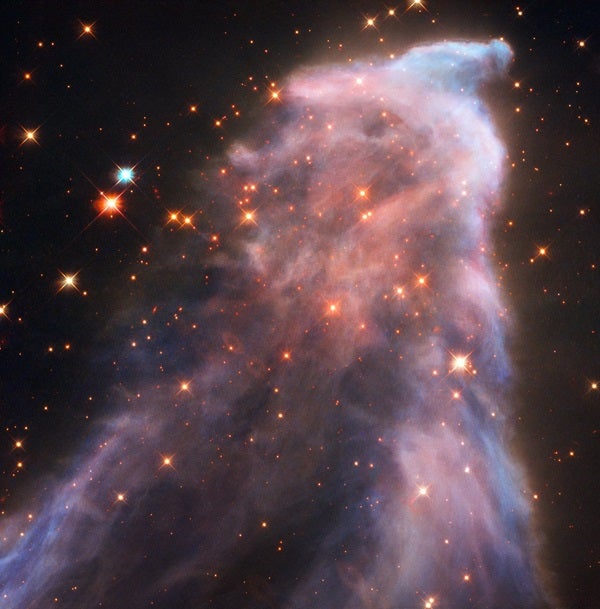Just in time for Halloween, the NASA/ESA Hubble Space Telescope has released a new, highly detailed image of IC 63, located 550 light-years from Earth in Cassiopeia the Queen and sometimes referred to as the Ghost Nebula or the Ghost of Cassiopeia. The nebula, which hangs near the bright star Gamma [γ] Cassiopeiae (the central point in the constellation’s “W” shape), is disappearing in the wake of the ultraviolet light pouring from the star. As the ghostly nebula fades under the onslaught of energetic photons, its hydrogen glows with reddish light. The blue light in this stunning image comes not from emission, but from reflection, as the dust within IC 63 reflects some of Gamma Cas’s incoming light. Because it both emits and reflects light, the Ghost Nebula is classified as an emission and reflection nebula.
IC 63 fades from visible (red) to infrared (blue) light, revealing some of the stars that lie within and beyond the ghostly cloud.
NASA, ESA, and J. DePasquale (STScI)
The Ghost Nebula isn’t the only nearby region affected by the star’s extreme emission. In fact, Gamma Cas is slowly eroding clouds in an area that spans 2° on the sky, or about four times the width of the Full Moon. Though the star itself is easy to find, IC 63 and neighboring IC 59 are dim and difficult to see without dark skies and a large telescope. By Halloween, the Moon will remain about 60 percent illuminated, so if you want to shoot for this cosmic apparition, it’ll be best to wait a few more days and aim for the New Moon on November 7.










